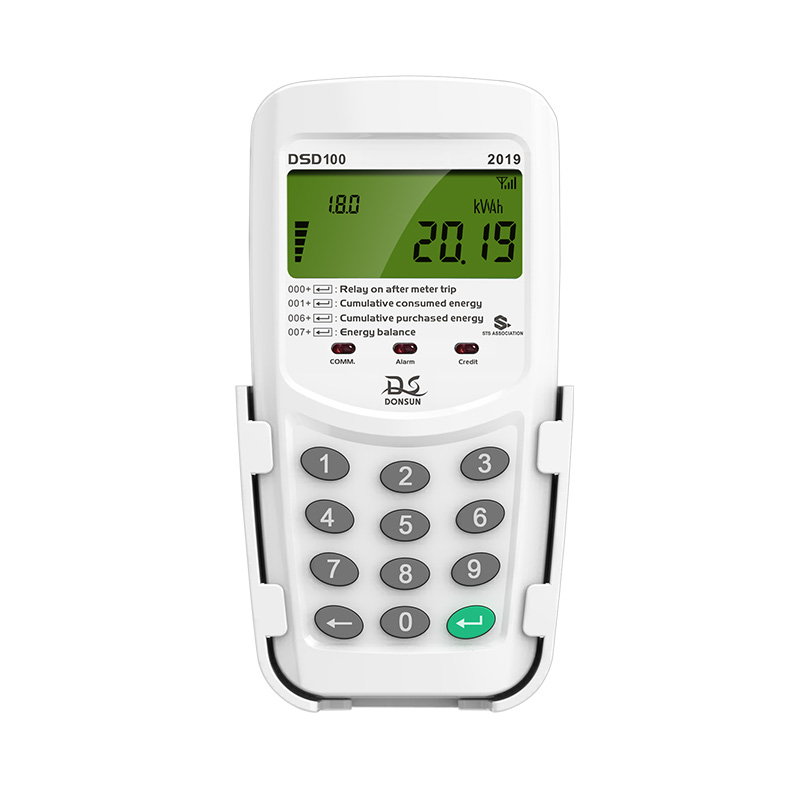- Español
- Português
- русский
- Français
- 日本語
- Deutsch
- tiếng Việt
- Italiano
- Nederlands
- ภาษาไทย
- Polski
- 한국어
- Svenska
- magyar
- Malay
- বাংলা ভাষার
- Dansk
- Suomi
- हिन्दी
- Pilipino
- Türkçe
- Gaeilge
- العربية
- Indonesia
- Norsk
- تمل
- český
- ελληνικά
- український
- Javanese
- فارسی
- தமிழ்
- తెలుగు
- नेपाली
- Burmese
- български
- ລາວ
- Latine
- Қазақша
- Euskal
- Azərbaycan
- Slovenský jazyk
- Македонски
- Lietuvos
- Eesti Keel
- Română
- Slovenski
- मराठी
- Srpski језик
Differences Between DIN Rail Split Prepayment Smart Energy Meter and Ordinary Energy Meters
2022-01-19
Differences between smart energy meters and ordinary energy meters
1. The ordinary electric energy meter only has the function of electric energy measurement. With the help of the remote communication function of the smart energy meter, users can remotely control various smart loads in the home, such as air conditioners, washing machines, refrigerators, lighting, etc., through the Internet or mobile communication network in different places, and through the remote communication function of the smart energy meter. Remote monitoring and alarming can also be achieved. In addition to the basic functions of electric energy measurement, smart energy meters also have functions such as information storage, real-time monitoring, automatic control, and information interaction. , electricity information security protection, event recording and other functions.
2. Compared with the previous electric energy meter, the smart electric energy meter has added new functions such as metering information management, electricity consumption information management, electricity consumption monitoring and measurement, etc., which can better provide accurate and timely electricity bill calculation functions for electricity customers. . As the home interface of the power grid, the smart energy meter transmits safe and high-quality electric energy to the user's electrical equipment through the smart meter; and with the wide application of new energy, many distributed new energy, such as wind energy, Solar energy, etc., have been fully used on the user side. This kind of micro-distributed energy can also be fed back to the grid through smart meters and connected to the grid. Therefore, the smart meter needs to have the function of two-way power transmission and measurement.
1. The ordinary electric energy meter only has the function of electric energy measurement. With the help of the remote communication function of the smart energy meter, users can remotely control various smart loads in the home, such as air conditioners, washing machines, refrigerators, lighting, etc., through the Internet or mobile communication network in different places, and through the remote communication function of the smart energy meter. Remote monitoring and alarming can also be achieved. In addition to the basic functions of electric energy measurement, smart energy meters also have functions such as information storage, real-time monitoring, automatic control, and information interaction. , electricity information security protection, event recording and other functions.
2. Compared with the previous electric energy meter, the smart electric energy meter has added new functions such as metering information management, electricity consumption information management, electricity consumption monitoring and measurement, etc., which can better provide accurate and timely electricity bill calculation functions for electricity customers. . As the home interface of the power grid, the smart energy meter transmits safe and high-quality electric energy to the user's electrical equipment through the smart meter; and with the wide application of new energy, many distributed new energy, such as wind energy, Solar energy, etc., have been fully used on the user side. This kind of micro-distributed energy can also be fed back to the grid through smart meters and connected to the grid. Therefore, the smart meter needs to have the function of two-way power transmission and measurement.
3. With the function of two-way metering, it supports the utilization of distributed energy. In addition to the amount of electricity entering the user, it can also record the amount of electricity the user provides to the grid. If users build their own distributed clean energy power generation facilities such as wind energy and solar energy, when the generated electricity cannot be used by themselves, excess power can be transferred to the power grid, so as to achieve energy conservation and environmental protection, reduce carbon dioxide emissions, make users’ life low-carbon, and improve economic benefits for users.




